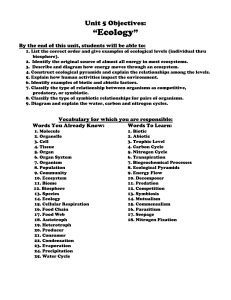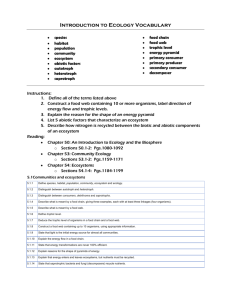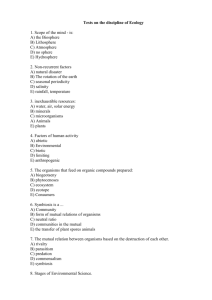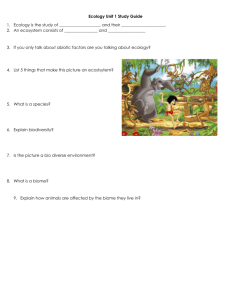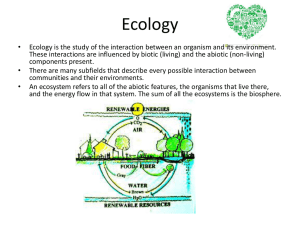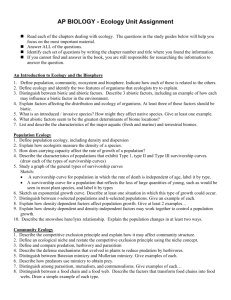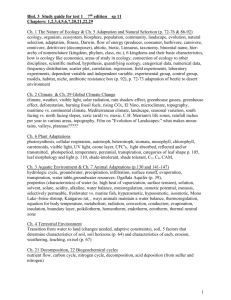Ecology Study Guide: Ecosystems, Food Webs, and Cycles
advertisement
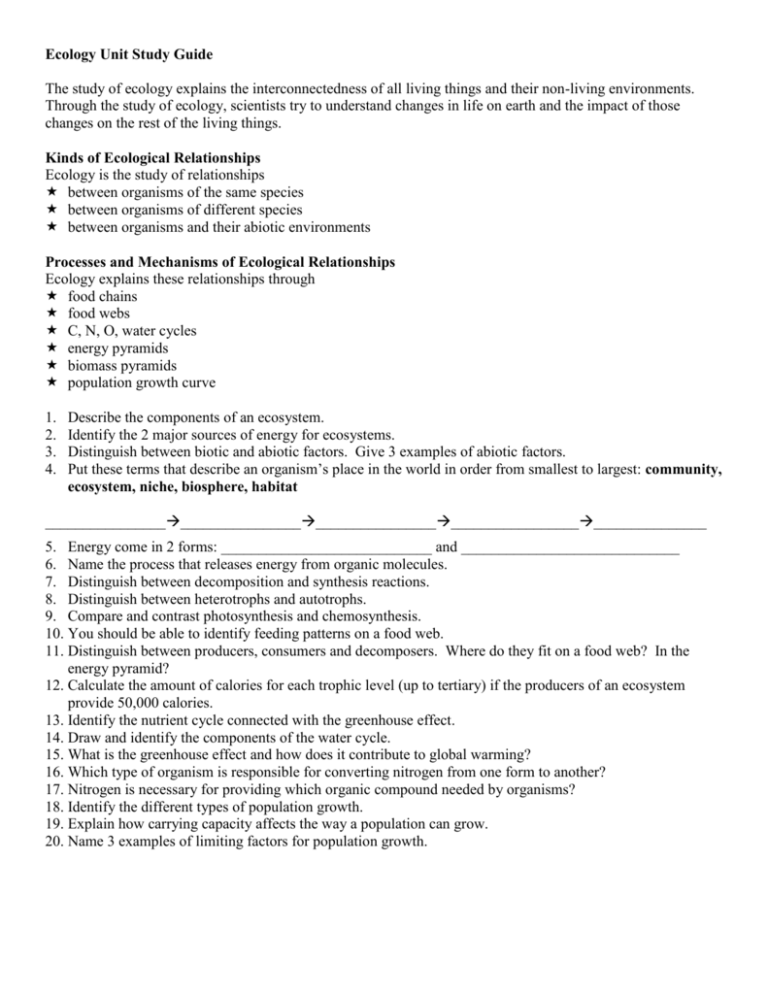
Ecology Unit Study Guide The study of ecology explains the interconnectedness of all living things and their non-living environments. Through the study of ecology, scientists try to understand changes in life on earth and the impact of those changes on the rest of the living things. Kinds of Ecological Relationships Ecology is the study of relationships between organisms of the same species between organisms of different species between organisms and their abiotic environments Processes and Mechanisms of Ecological Relationships Ecology explains these relationships through food chains food webs C, N, O, water cycles energy pyramids biomass pyramids population growth curve 1. 2. 3. 4. Describe the components of an ecosystem. Identify the 2 major sources of energy for ecosystems. Distinguish between biotic and abiotic factors. Give 3 examples of abiotic factors. Put these terms that describe an organism’s place in the world in order from smallest to largest: community, ecosystem, niche, biosphere, habitat ________________________________________________________________________________ 5. Energy come in 2 forms: ____________________________ and _____________________________ 6. Name the process that releases energy from organic molecules. 7. Distinguish between decomposition and synthesis reactions. 8. Distinguish between heterotrophs and autotrophs. 9. Compare and contrast photosynthesis and chemosynthesis. 10. You should be able to identify feeding patterns on a food web. 11. Distinguish between producers, consumers and decomposers. Where do they fit on a food web? In the energy pyramid? 12. Calculate the amount of calories for each trophic level (up to tertiary) if the producers of an ecosystem provide 50,000 calories. 13. Identify the nutrient cycle connected with the greenhouse effect. 14. Draw and identify the components of the water cycle. 15. What is the greenhouse effect and how does it contribute to global warming? 16. Which type of organism is responsible for converting nitrogen from one form to another? 17. Nitrogen is necessary for providing which organic compound needed by organisms? 18. Identify the different types of population growth. 19. Explain how carrying capacity affects the way a population can grow. 20. Name 3 examples of limiting factors for population growth. Nitrogen Cycle _____ (gas in atmosphere) (in soil) (in soil)
